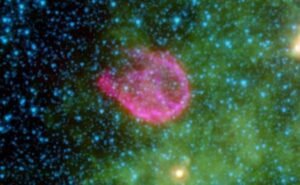Positive and Negative News for the Greatest Dream of Astronomers

(EFU) —Positive and Negative News for the Greatest Dream of Astronomers The US ought to commit $1.6 billion to build an “very enormous telescope” that would vault American stargazing into another time, as per the Public Science Load up, which prompts the Public Science Establishment.
In a proclamation on Feb. 27, the board gave the establishment until May to choose how to pick between two contending recommendations for the telescope. The declaration came as a help to American stargazers, who have been worrying about losing ground to their European partners in the journey to look at the sky with far superior telescopes.
However, which of the two telescopes will be assembled — and the destiny of the dreaming and the billions of dollars of time and innovation contributed as of now — stays an open inquiry. Numerous cosmologists had trusted that the establishment, the customary lender of public observatories, would find a way put resources into the two ventures.
The two tasks are the Goliath Magellan Telescope at Las Campanas in Chile and the Thirty Meter Telescope, potentially bound for Mauna Kea on the island of Hawaii, otherwise called the Huge Island. Both would be bigger and more remarkable than any telescope as of now on The planet or in space. Each is supposed to cost some $3 at least billion, and not exactly a portion of the projected expense has been raised such a long ways by the global joint efforts backing them.
In a declaration circling among cosmologists, the board said that subsidizing even one telescope at the price tag of $1.6 billion would take up the greater part of the N.S.F’s. average spending plan for development
Positive and Negative News for the Greatest Dream of Astronomers
The US ought to commit $1.6 billion to building an “incredibly huge telescope” that would vault American stargazing into another time, as per the Public Science Load up, which exhorts the Public Science Establishment.
In a proclamation on Feb. 27, the board gave the establishment until May to choose how to pick between two contending recommendations for the telescope. The declaration came as a help to American stargazers, who have been worrying about losing ground to their European partners in the journey to look at the sky with far superior telescopes.
Yet, which of the two telescopes will be assembled — and the destiny of the dreaming and the billions of dollars of time and innovation contributed as of now — stays an open inquiry. Numerous cosmologists had trusted that the establishment, the conventional lender of public observatories, would find a way put resources into the two ventures.
The two ventures are the Goliath Magellan Telescope at Las Campanas in Chile and the Thirty Meter Telescope, potentially bound for Mauna Kea on the island of Hawaii, otherwise called the Huge Island. Both would be bigger and more remarkable than any telescope presently on The planet or in space. Each is supposed to cost some $3 at least billion, and not exactly around 50% of the projected expense has been raised such a long ways by the worldwide joint efforts backing them.
In a declaration coursing among stargazers, the board said that financing even one telescope at the price tag of $1.6 billion would take up the majority of the N.S.F’s. common spending plan for development
Wendy Freedman, a cosmologist at the College of Chicago who drove the Goliath Magellan project in its most memorable ten years, said in an email: “I’m extremely satisfied that the N.S.B. has chosen to subsidize an E.L.T. I believe that the most terrible result would have been not to subsidize any E.L.T. by any stretch of the imagination; that would have been a misfortune! Everything being equal (and sadly), there isn’t a financial plan for two. Yet, an E.L.T. is basic for the fate of U.S. space science.”
She added, “So I’m exceptionally feeling better”
Robert Shelton, leader of the Monster Magellan cooperation, said: “We regard the Public Science Board’s proposal to the Public Science Establishment and stay focused on working intimately with the N.S.F. also, the cosmic local area to guarantee the fruitful acknowledgment” of a very enormous telescope, “which will empower state of the art exploration and revelations long into the future.”
However, Richard Ellis, an astrophysicist at College School London who was one of the early heads of the Thirty Meter Telescope project, told Science, “It’s a misfortune, given the venture made in the two telescopes.”
The force of a telescope to see further and fainter objects in space not entirely settled by the size of its essential mirror. The biggest telescopes on Earth are eight to 10 meters in breadth. The Goliath Magellan would bunch seven eight-meter mirrors to make what could be compared to a 25-meter telescope; the seventh and last mirror was projected last year, and laborers are prepared to pour concrete at the site on Las Campanas.
The Thirty Meter would be made out of 492 hexagonal mirror fragments, increasing the plan of the twin 10-meter Keck telescopes being worked on Mauna Kea by the California Establishment of Innovation and the College of California. (The 100th section was simply projected in California, yet fights by Local Hawaiians and different pundits have forestalled any work on the T.M.T. site on Mauna Kea; the task bunch has been thinking about an elective site in the Canary Islands.) Neither one of the telescopes is probably going to be prepared until the 2030s.
Indeed, even as the American-drove exertion advances, the European Southern Observatory is building a very huge telescope — called the Very Enormous Telescope — at the Paranal Observatory in Chile. Its fundamental mirror, made out of 798 hexagonal fragments, will be the greatest and generally strong of all — 39 meters in measurement. It will likewise be the first among the contenders to be finished; European space experts intend to begin involving it in 2028. Assuming the work is fruitful, it would be the initial opportunity in a century that the greatest working telescope on Earth isn’t on American soil.
Both the Goliath Magellan and the Thirty Meter telescopes are global joint efforts settled a couple of miles separated in Pasadena, Calif.
Support from the N.S.F. has been a disputed matter between the two gatherings from their starting points quite a while back.
In 2019, the two gatherings consented to combine efforts to make an American E.L.T. program, under the domain of the Public Optical-Infrared Exploration Research center in Tucson, Ariz., that would permit American cosmologists to use the two telescopes. Astro 2020, a blue-lace board of the Public Foundations of Science, embraced the proposition, calling it the main concern in ground-based stargazing for the 10 years. The board suggested that the science establishment chip in $1.6 billion to purchase part possession in either of the telescopes.
In any case, the expenses of these telescopes has proceeded to rise, and $1.6 billion doesn’t go to the extent that it once did. What’s more, the wheels of established researchers and the national government turn gradually.

Positive and Negative News for the Greatest Dream of Astronomers
“That cycle requires three to five years,” said Linnea Avallone, boss official for research offices at the N.S.F. I don’t believe we’re not being forceful. She added that the establishment was being “generally excellent stewards of the citizens’ cash.” Positive and Negative News for the Greatest Dream of Astronomers
Did she see a gamble to the US not subsidizing a Very Huge Telescope of its own?
“That is a decent inquiry, improved replied by stargazers,” Dr. Avallone saidaza.” Positive and Negative News for the Greatest Dream of Astronomers
Positive and Negative News for the Greatest Dream of AstronomersPositive and Negative News for the Greatest Dream of AstronomersPositive and Negative News for the Greatest Dream of AstronomersPositive and Negative News for the Greatest Dream of AstronomersPositive and Negative News for the Greatest Dream of AstronomersPositive and Negative News for the Greatest Dream of AstronomersPositive and Negative News for the Greatest Dream of AstronomersPositive and Negative News for the Greatest Dream of AstronomersPositive and Negative News for the Greatest Dream of Astronomers









Thank you for creating such valuable content. Your hard work and dedication are appreciated by so many.